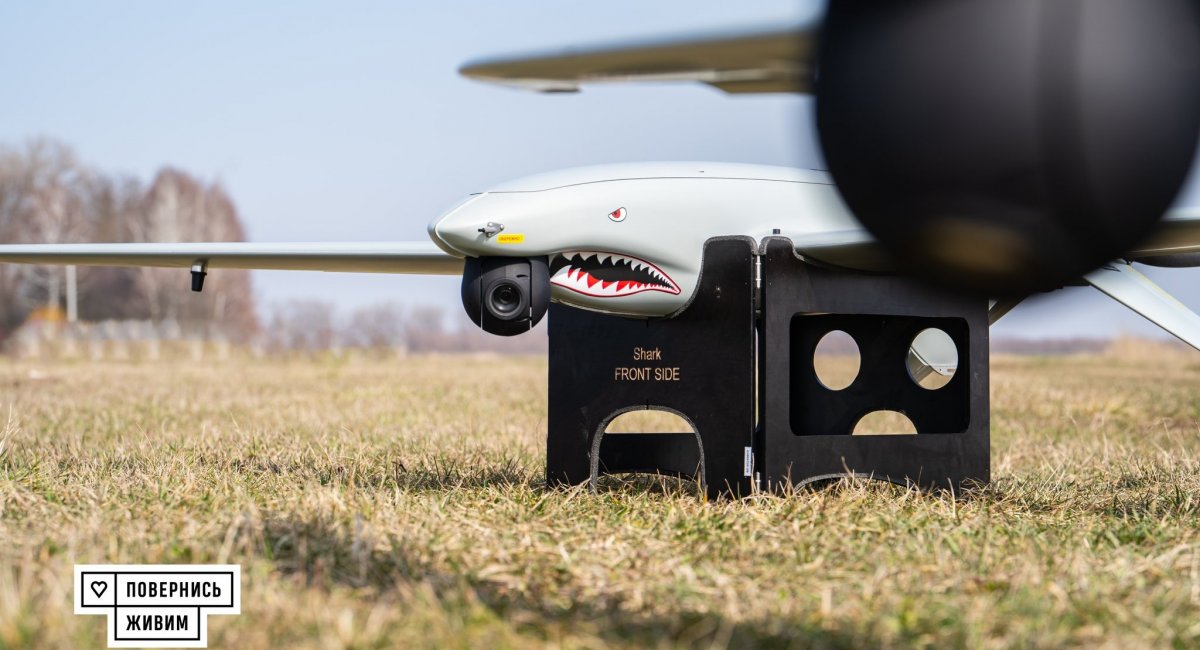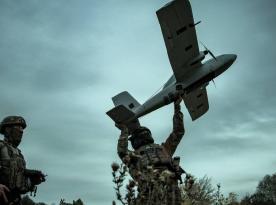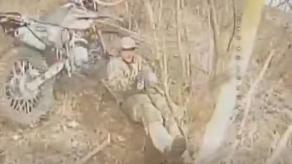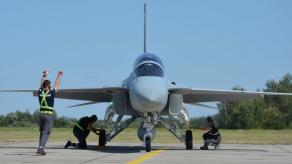A recently published video from the Ukrainian Armed Forces shows an effective strike on a building where russian operators of Zala UAV were hiding. The strike was executed thanks to fire adjustment by the 140th Reconnaissance Battalion and the 32nd Artillery Brigade of the Ukrainian Marine Corps, and the 73rd Marine Center of Special Operations Forces.
The weapon fielded for the attack was the M142 HIMARS rocket system and the picture of what's happening on the ground was provided by the Shark unmanned aerial vehicle that was sent to see the target and confirm the results of the strike.
Read more: Ukraine Got New Winged FPV Drone With Longer Range and Durability, to Spend Less HIMARS Rockets

The Shark all-weather reconnaissance drone from Ukrspecsystems paired up with the HIMARS has become a common sight. The drone has proven its capabilities on numerous occasions and was recognized as reliable enough to support one of the most valuable combat units in the Ukrainian Armed Forces.
For instance, in late February 2024, a HIMARS struck a russian training ground in southern Ukraine leaving dozens of russian military personnel from the 810th Marine Brigade and 81st Self-Propelled Artillery Regiment destroyed on the spot. Adjusting the fire was also the Shark UAV, it was loitering high above the target, although such a facility was presumably protected by powerful electronic warfare and air defense equipment.
The synergy of the Ukrainian domestically produced scout drone and American-made rocket system has become a pattern at this point but let's look at this situation from a different angle. The United States has stopped regular supplies of military assistance to Ukraine for a few months now. Any GMLRS rocket fired by HIMARS is extremely valuable, and its spending must be a sure kill on target. That largely depends on the quality of reconnaissance: target detection, confirmation, the ability to take a look up close in adverse conditions, etc.
The task is usually delegated to fixed-winged-type aerial drones, so any unit comes at the cost of a GMLRS rocket spent to make the strike happen. Ukrainian developer of the Shark, Ukrspecsystems, earlier emphasized how important it was to constantly improve their unit to keep up with the constantly changing conditions on the battlefield and to make sure Shark is resistant to any interference. For that purpose, they collected data even from social media comments.
That makes a good illustration that reliable and sophisticated drones still have not lost their relevance and role on the battlefield, contrary to what might seem against the background of recent news. Like the attack drones made of literally plastic bottles and tubes or all kinds of mass-produced FPV drones and loitering munitions.
Read more: Ukraine's New MacGyvered Kamikaze Drones are a Menace, russians Complain














